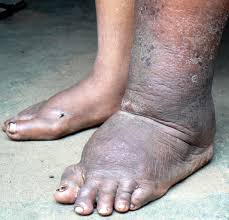Lymphatic Filariasis (LF) : Mass Drug Administration (MDA) campaign

India has launched a nationwide Mass Drug Administration (MDA) campaign covering 111 endemic districts across 13 states, with the goal of eliminating Lymphatic Filariasis (LF) by 2027.
- Lymphatic Filariasis (LF), also called Elephantiasis, is a parasitic disease caused by filarial worms that infect the human lymphatic system, leading to severe swelling and disability.
- India is among the highest-burden countries for LF, contributing significantly to the global caseload.
- Bihar, Uttar Pradesh, and Odisha are among the states with the highest number of LF cases
- The government aims to eliminate LF by 2027 through mass drug administration, morbidity management, and vector control strategies.
- Causes and Transmission:
- Caused by Wuchereria bancrofti (most common), Brugia malayi, and Brugia timori parasites.
- Transmitted through mosquito bites (Anopheles, Culex, Aedes species).
- Requires repeated mosquito bites over months or years for infection to establish.
- Symptoms:
- Asymptomatic in early stages but leads to chronic lymphatic damage over time.
- Common symptoms:
- Lymphedema: Swelling of arms, legs, breasts, or genitals.
- Elephantiasis: Thickening of the skin and severe swelling.
- Hydrocele: Swelling of the scrotum (in males).
- Recurrent infections due to weakened immunity.
- Prevention and Treatment
- Mass Drug Administration (MDA): Annual distribution of anti-filarial drugs (Diethylcarbamazine + Albendazole).
- Triple Drug Therapy in select districts to accelerate LF elimination efforts.
- Triple Drug Therapy include diethylcarbamazine (DEC) + Albendazole + Ivermectin.
- Morbidity Management & Disability Prevention (MMDP): Ensuring access to care for affected individuals.
- Surgical intervention: Hydrocelectomy under Ayushman Bharat PM-JAY scheme.
- Vector Control: Use of mosquito nets, insecticides, and community awareness.




